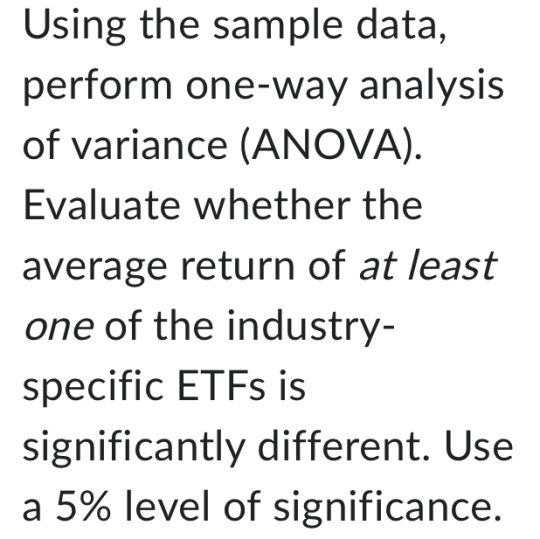#python programming course
Explore tagged Tumblr posts
Text

Are you in need of a python programming course in Kolkata? Count on Palium Skills. Python Programming course is a training program designed to lead the participant to understand how to work successfully work in this domain. It is delivered in classroom and live online batches held on weekdays and weekends. Batches are held in regular classrooms and fast-track mode. For more information, you can call us at +918420594969.
0 notes
Text
Join Python programming course at TCCI and learn coding from scratch with expert guidance and hands-on practice.
#Python programming course#learn Python in Ahmedabad#Python training classes#beginner Python course#TCCI computer coaching
0 notes
Text
Python Programming Course
MWCedu Python Programming Course is perfect for beginners who want to learn programming from scratch. It covers all foundational topics, including variables, data types, loops, and conditionals. As you progress, you'll dive into more complex concepts like functions, modules, and object-oriented programming (OOP). The course also explores Python libraries used for data analysis, web development, and automation. With practical hands-on projects and quizzes, you’ll develop real-world skills. Our flexible, self-paced learning structure ensures you can learn at your own pace. Experienced instructors are available to guide and support you throughout the course. By the end, you’ll have the knowledge to build Python applications and solve programming challenges. Start your journey to becoming a skilled Python developer today with MWCedu!

#Python Programming Course#Online Python programming Course in punjab#Python programming course#Online education course#online python course in india#online python course with certificate
1 note
·
View note
Text
5 Important Features of Python Programming
Python is a widely used, high-level programming language known for its simplicity, versatility, and efficiency. Designed to be easy to learn, Python’s clean syntax and readability make it an excellent choice for both beginners and experienced developers. Refer to the Python Online Classes for more information. It supports multiple programming paradigms and boasts an extensive standard library,…
0 notes
Text
Learn python programming course in Technofine24 with certified teachers. We provide classes online and offline. Enroll now for basic to advance Python course
0 notes
Text
How to Use a Python Library in Java via Its API
Combining different programming languages in a single project can be very powerful. One useful combination is using Python libraries in a Java program. This lets you take advantage of Python’s many tools, like those for data analysis or machine learning, while still using Java’s strength in building large, reliable applications. This guide will show you how to use a Python library in Java through an API.

Why Combine Python and Java?
Python is known for being easy to use and having many libraries that can help with various tasks, like data processing or machine learning. On the other hand, Java is a popular choice for big projects because it’s fast and reliable. By combining the two, you can use Python’s great tools in a Java program, getting the best of both worlds.
One way to make Python and Java work together is by using an API. An API, or Application Programming Interface, is like a bridge that lets different software pieces talk to each other. In this case, the API lets your Java program use Python libraries.
Step 1: Choosing the Right Tools
To start, you need the right tools to connect Python and Java. Here are a few options:
Jython: Jython is a version of Python that runs on the Java platform. It allows you to use Python code directly in Java. However, it doesn’t support the latest Python versions, and it may not be as fast as other options.
Py4J: Py4J allows Java programs to run Python code and share data between the two languages. It’s a flexible and popular choice for this kind of integration.
Jep (Java Embedded Python): Jep embeds a Python interpreter in Java applications, allowing you to run Python code from Java. It’s designed to be fast, making it a good choice for performance-sensitive tasks.
Step 2: Setting Up Your Environment
We’ll focus on using Py4J to call a Python library from Java. Here’s how to set up your environment:
Install Python: First, make sure Python is installed on your computer. You can download it from the official Python website.
Install Py4J: Next, install Py4J by running this command in your terminal:

3. Set Up a Java Project: Create a new Java project using your preferred IDE, like IntelliJ IDEA or Eclipse. Add the Py4J library to your Java project. You can download it from the Py4J website or add it using a build tool like Maven or Gradle.
Step 3: Writing the Python Code
Let’s say you want to use a Python library called NumPy to calculate the square of a number. First, create a Python script that does this. Here’s an example:

Save this script as my_script.py in your working directory.
Step 4: Writing the Java Code
Now, write the Java code to call this Python script using Py4J. Here’s an example:
import py4j.GatewayServer;
public class PythonCaller {
public static void main(String[] args) {
GatewayServer gatewayServer = new GatewayServer();
gatewayServer.start();
System.out.println("Gateway Server Started");
try {
Process process = Runtime.getRuntime().exec("python my_script.py");
BufferedReader in = new BufferedReader(new InputStreamReader(process.getInputStream()));
String result;
while ((result = in.readLine()) != null) {
System.out.println(result);
}
in.close();
} catch (IOException e) {
e.printStackTrace();
}
}
}
This Java code starts a Py4J gateway server to connect with Python. It then runs the Python script using the Runtime.exec() method and prints the result.
Step 5: Running and Testing
After setting up your Python and Java code, you can run your Java program. Here’s what will happen:
The Java program starts the Py4J gateway server.
The Java program runs the Python script.
The result from the Python script is printed out by the Java program.
You can test this setup by trying different Python libraries, like pandas for data analysis or scikit-learn for machine learning, and see how they work with your Java program.
Step 6: Sharing Data Between Java and Python
Often, you’ll want to pass data back and forth between Java and Python. Py4J makes this easy. For example, you can send a list of numbers from Java to Python, have Python square them using NumPy, and then return the squared numbers to Java.
Python Script (my_script.py):

Java Code:
import py4j.GatewayServer;
import py4j.Py4JNetworkException;
import java.util.Arrays;
import java.util.List;
public class PythonCaller {
public static void main(String[] args) {
GatewayServer gatewayServer = new GatewayServer(new PythonCaller());
gatewayServer.start();
try {
List<Integer> numbers = Arrays.asList(1, 2, 3, 4, 5);
Object[] results = gatewayServer.getPythonServerEntryPoint(new Class[] {}).calculate_squares(numbers);
System.out.println("Squared numbers: " + Arrays.toString(results));
} catch (Py4JNetworkException e) {
e.printStackTrace();
}
}
}
Best Practices to Keep in Mind
When using Python in a Java program, there are a few things to remember:
Error Handling: Make sure your Java code can handle any errors that might come up when running Python code. This will help keep your Java program stable.
Performance: Running Python code from Java can slow things down, especially if you’re working with large amounts of data. Test your setup to make sure it’s fast enough for your needs.
Security: Be careful when running external scripts, especially if they use user input. Make sure inputs are safe and won’t cause security issues.
Documentation: Keep good notes on how your Python and Java code work together. This will make it easier to update or fix your code later on.
Conclusion
Using Python libraries in a Java program can make your projects much more powerful. By following these steps, you can set up a system where Java and Python work together smoothly. Whether you’re doing data analysis, machine learning, or any other task, combining Python and Java can help you get more done with your code.
#python training institute in course#python certifition course#python training course#best python courses#python programming course
0 notes
Text
Python Programming Course
This course serves as an introduction to the Python programming Course language, covering fundamental concepts and practical applications. Whether you’re a beginner or have some programming experience in other languages, this course will provide you with a solid foundation in Python.This course outline provides a structured approach to learning Python, balancing theory with practical applications through hands-on exercises and projects. Adjustments can be made based on the target audience and specific learning goals.

0 notes
Text
Master the Fundamentals with Our Basic Python Programming Course | Docsta Learn
Explore the world of Python programming with our comprehensive Basic Python Programming course on Docsta. Learn essential concepts, syntax, and problem-solving skills to kickstart your programming journey. For more details check here: https://docsta.com/course/basic-python-programming
0 notes
Text
Master Python in 2023: Unleash the Power of Its Effective Approach

Python is a versatile and powerful programming language that has gained immense popularity among developers and tech enthusiasts. Its simplicity, readability, and vast array of libraries and frameworks make it an ideal choice for various applications, ranging from web development to data analysis and artificial intelligence. If you've been considering learning Python or want to enhance your coding skills, enrolling in a Python course can be a game-changer for your career.
We’ll explore the benefits of taking a Python course and how it can pave the way for your coding succes
Building a Solid Foundation:
A Python course provides beginners with a solid foundation in programming. You'll start from scratch, learning the basics of Python syntax, data types, control flow, and functions. By mastering these fundamental concepts, you'll develop a strong programming mindset that can be applied to other languages as well. Read More : Learn Python in 2023 & Become an Expert through its Effective Approach
#learn python#python course#python course for beginners#python programming course#python learning course#python coding for beginners
0 notes
Photo

Python Programming Internship
Python is an interpreted, object-oriented, high-level programming language with dynamic semantics. It is widely used for web development, system scripting, and software development. Python supports easy syntax which helps the developers to write the program in very few lines. CAD DESK training course offers comprehensive knowledge about Python along with the working of strings, functions, data types, and variables, etc. in Python.
IT Desk India has Python Programming Internship Program in Jaipur with 10 years of experience Trainer. We provide Industrial and Summer Training in Python Programming Courses in Jaipur, India.
Python follows the interpreter system which enables it to execute the code as soon as it is written, which ultimately provides quick prototyping. Python is compatible with majorly all platforms like Windows, Linux, Unix, and Mac, etc. It has a variety of built-in functions available which helps in creating the codes for the program very easily. CAD DESK promotes student Internship and all trainings are given on the latest version of Python.
0 notes
Text

#obey me#obey me leviathan#obey me levi#henry 1.0#traditional art#styx scribbles#this was based on that introductory python programming course meme even tho the snakes in that meme are not pythons#and i have no idea what snake henry is lol
66 notes
·
View notes
Text
Python is a versatile programming language with a wide range of use cases across industries. It is widely used in web development (with frameworks like Django and Flask), data analysis and visualization (using tools like Pandas and Matplotlib), and machine learning and AI (with libraries such as TensorFlow and PyTorch).
0 notes
Text
going into my final week of classes and we always have one last week after the final paper (so the professors have time for grading) where typically the only work we have is one last discussion post.
usually, this post is pretty simple and light (to go easy on us after the final). my ethics class is like “summarize your conclusions from your final paper! :)” and my communications class is like “tell the class about your career goals! :)”
meanwhile, statistics…

#which is very easy - it’s just FUNNY#you thought we were done learning new material after the final? THINK AGAIN!!!!!!!!#READ THE PYTHON SCRIPT AND WEEP#no but stats was my favorite class this semester…#i still wanna take stats II but i haven’t decided for sure yet#it’s a lot of work but it’s very straightforward work#as opposed to my environmental and communications courses that involve a lot of opinion#which is fine but can be really tiring when the thing they want my opinion about is stupid or repetitive#like. FOUR courses made me take that one environmental footprint calculator quiz…#FOUR SEPARATE COURSES#and it’s like. i’m not saying it’s not important - but i GET IT!!!!!!!#at this point it’s just a waste of my time - teach me something i don’t already know!#i definitely should have taken a different online program but that’s beside the point#it’ll even out once i get my master’s#and i’m ultimately happy to have had the ‘broader’ education of environmental science (with a communication minor)#bc i think that’ll serve me better in management later in my career#even if it makes early career stuff more difficult
10 notes
·
View notes
Text
SQL Fundamentals #1: SQL Data Definition
Last year in college , I had the opportunity to dive deep into SQL. The course was made even more exciting by an amazing instructor . Fast forward to today, and I regularly use SQL in my backend development work with PHP. Today, I felt the need to refresh my SQL knowledge a bit, and that's why I've put together three posts aimed at helping beginners grasp the fundamentals of SQL.
Understanding Relational Databases
Let's Begin with the Basics: What Is a Database?
Simply put, a database is like a digital warehouse where you store large amounts of data. When you work on projects that involve data, you need a place to keep that data organized and accessible, and that's where databases come into play.
Exploring Different Types of Databases
When it comes to databases, there are two primary types to consider: relational and non-relational.
Relational Databases: Structured Like Tables
Think of a relational database as a collection of neatly organized tables, somewhat like rows and columns in an Excel spreadsheet. Each table represents a specific type of information, and these tables are interconnected through shared attributes. It's similar to a well-organized library catalog where you can find books by author, title, or genre.
Key Points:
Tables with rows and columns.
Data is neatly structured, much like a library catalog.
You use a structured query language (SQL) to interact with it.
Ideal for handling structured data with complex relationships.
Non-Relational Databases: Flexibility in Containers
Now, imagine a non-relational database as a collection of flexible containers, more like bins or boxes. Each container holds data, but they don't have to adhere to a fixed format. It's like managing a diverse collection of items in various boxes without strict rules. This flexibility is incredibly useful when dealing with unstructured or rapidly changing data, like social media posts or sensor readings.
Key Points:
Data can be stored in diverse formats.
There's no rigid structure; adaptability is the name of the game.
Non-relational databases (often called NoSQL databases) are commonly used.
Ideal for handling unstructured or dynamic data.
Now, Let's Dive into SQL:

SQL is a :
Data Definition language ( what todays post is all about )
Data Manipulation language
Data Query language
Task: Building and Interacting with a Bookstore Database
Setting Up the Database
Our first step in creating a bookstore database is to establish it. You can achieve this with a straightforward SQL command:
CREATE DATABASE bookstoreDB;
SQL Data Definition
As the name suggests, this step is all about defining your tables. By the end of this phase, your database and the tables within it are created and ready for action.

1 - Introducing the 'Books' Table
A bookstore is all about its collection of books, so our 'bookstoreDB' needs a place to store them. We'll call this place the 'books' table. Here's how you create it:
CREATE TABLE books ( -- Don't worry, we'll fill this in soon! );
Now, each book has its own set of unique details, including titles, authors, genres, publication years, and prices. These details will become the columns in our 'books' table, ensuring that every book can be fully described.
Now that we have the plan, let's create our 'books' table with all these attributes:
CREATE TABLE books ( title VARCHAR(40), author VARCHAR(40), genre VARCHAR(40), publishedYear DATE, price INT(10) );
With this structure in place, our bookstore database is ready to house a world of books.
2 - Making Changes to the Table
Sometimes, you might need to modify a table you've created in your database. Whether it's correcting an error during table creation, renaming the table, or adding/removing columns, these changes are made using the 'ALTER TABLE' command.
For instance, if you want to rename your 'books' table:
ALTER TABLE books RENAME TO books_table;
If you want to add a new column:
ALTER TABLE books ADD COLUMN description VARCHAR(100);
Or, if you need to delete a column:
ALTER TABLE books DROP COLUMN title;
3 - Dropping the Table
Finally, if you ever want to remove a table you've created in your database, you can do so using the 'DROP TABLE' command:
DROP TABLE books;
To keep this post concise, our next post will delve into the second step, which involves data manipulation. Once our bookstore database is up and running with its tables, we'll explore how to modify and enrich it with new information and data. Stay tuned ...
Part2
#code#codeblr#java development company#python#studyblr#progblr#programming#comp sci#web design#web developers#web development#website design#webdev#website#tech#learn to code#sql#sqlserver#sql course#data#datascience#backend
112 notes
·
View notes
Text
Python is such a cool name for something that’s actually terrible and mean
9 notes
·
View notes
